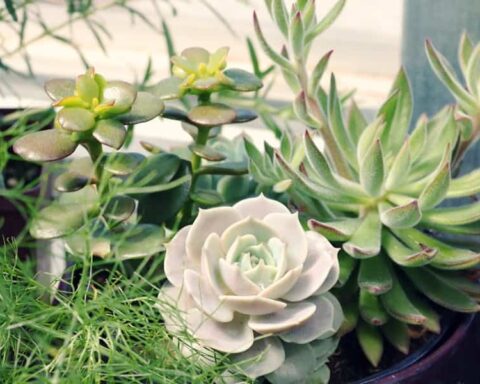Reverse osmosis (RO) water has become a popular choice for many home gardeners and commercial growers alike. Its ability to remove impurities and reduce the levels of salts, nitrates and other pollutants makes it a great choice for helping plants to thrive. But is reverse osmosis water good for plants? In this article, we will explore the benefits and drawbacks of using RO water for watering plants. We will discuss how RO water can be used effectively to help support plant health, while also understanding the potential risks it can pose to plant growth and health. In addition, we will look at alternative methods of providing water to plants, and consider the overall value of reverse osmosis water for plants.
Is Reverse Osmosis Water Good For Plants?
Yes, reverse osmosis water is a great choice for watering plants. Reverse osmosis (RO) is a process by which water is passed through a semipermeable membrane, removing most of the contaminants and dissolved solids. This makes the water very pure and is ideal for plants as it does not contain any of the salts or other minerals that can build up and damage the root system of a plant.
Benefits Of Using Reverse Osmosis Water For Plants
- As we explored above, a primary benefit of using a reverse osmosis filtration system to treat water is that it allows impurities to be removed while still retaining the water’s chemical ions. This can be helpful for plant health, particularly in areas where the soil or water is high in impurities. Here are some other benefits of using reverse osmosis water for plants.
- Better plant growth: By removing the salt and other impurities from the water, a reverse osmosis filtration system can help to improve plant growth. This is particularly true for flowering and fruiting plants, which are especially sensitive to increased levels of salts in the soil.
- Higher yield: The improved plant growth that can be achieved with a reverse osmosis filtration system can also lead to higher yields. This can be helpful for commercial growers, but can also be helpful for home gardeners looking to grow more food or flowers.
- Better tasting water: By removing impurities from the water, a reverse osmosis filtration system can also improve its taste. This can be helpful for all homeowners, particularly if the water in their area is known to be high in impurities.
- Reduced need for fertilizer: By improving plant growth and reducing the need for fertilizer, a reverse osmosis filtration system can help to reduce the amount of fertilizer that needs to be added to the water. This can help to reduce the amount of fertilizer that ends up in the soil and in the groundwater, while also lowering the cost of fertilizing your plants.
Potential Drawbacks Of Using Reverse Osmosis Water For Plants
- While using a reverse osmosis filtration system to treat water can have many benefits, it is important to understand the potential drawbacks of using this method. Here are some potential drawbacks of using reverse osmosis water for plants.
- Increased cost: While reverse osmosis filtration systems are designed to be affordable, they still cost more than many other filtration methods. Depending on the model you select, you can expect to pay anywhere from $100 to $500 for a RO filtration system.
- Higher energy costs: Reverse osmosis filtration systems use a significant amount of energy to operate, which can increase your energy costs.
- Increased risk of mineral depletion: Reverse osmosis filtration systems remove minerals from the water in order to remove impurities. While these minerals are still present in very small quantities, there is a risk of mineral depletion in areas where the water is already low in minerals.
- Reduced pH: The process used to remove impurities from the water can also reduce the pH level of the water. This can make the water more acidic, which can be harmful to plants in some situations.
How To Use Reverse Osmosis Water For Plants?
- The best way to use reverse osmosis water for plants is to simply treat the water as you normally would. There are a few things you can do to ensure that the plants benefit from the impurities that have been removed.
- Make sure the water is properly pH balanced: The process used to remove impurities from the water can also reduce the pH level of the water. This can make the water more acidic, which can be harmful to plants in some situations. Check the pH level of your water, and make sure it is properly balanced for the plants you are growing.
- Use mineral-enriched water for sensitive plants: Some plants are particularly sensitive to the impurities removed by a reverse o-sis filtration system. If you are growing one of these plants, it may be helpful to use mineral-enriched water that has not been filtered.
- Add minerals to the water: If you are concerned about mineral depletion in your water, you can add minerals to it through a process called “mineralization”.
Alternatives To Reverse Osmosis Water For Plants
- While using reverse osmosis water for plants can provide many benefits, there are also a number of ways to treat water without the use of a reverse osmosis filtration system. Here are some common methods used to treat water without using a reverse osmosis filtration system.
- Ionic water: Ionic water is water that has been treated with electricity. This process can help to remove impurities from the water while also balancing its pH levels.
- UV water filtration: UV water filtration is a process that uses ultraviolet light to kill bacteria and viruses in the water. This is useful for treating water that may be contaminated with bacteria or viruses, such as rainwater or water from ponds and lakes.
- Distillation water filtration: Distillation water filtration is a process that heats water to its boiling point, turning it into vapor. It then collects the vapor and turns it back into the water.
The Overall Value Of Reverse Osmosis Water For Plants
- Overall, using a reverse osmosis filtration system to treat the water you use for plants can provide a number of benefits. It can be helpful for people living in areas with high levels of impurities, and it can help to improve the growth and yield of plants.
- In addition, it can help to improve the taste of the water. However, it is important to note that there is no one filtration method that works for all plants. It is important to select a filtration method that is appropriate for the type of plants you are growing. In addition, it is also important to test the pH level of the water regularly to ensure that the level of impurities has been reduced.
- It can provide clean, pure water for your plants without the risk of mineral depletion or a decreased pH level.
- It is important to be aware of the potential drawbacks associated with reverse osmosis filtration systems and to take steps to ensure that your plants benefit from the impurities that have been removed.
- By properly pH balancing the water and adding minerals when necessary, you can ensure that your plants are receiving the best possible care.
Conclusion
Reverse osmosis water can be beneficial for plants, as it removes impurities and can help to balance the pH levels of the water. However, there are also a number of alternatives to reverse osmosis water filtration that can be used for treating water for plants. These include ionic water, UV water filtration, and distillation water filtration. It is important to research each method before using it to ensure that it will provide the best results for your plants.










